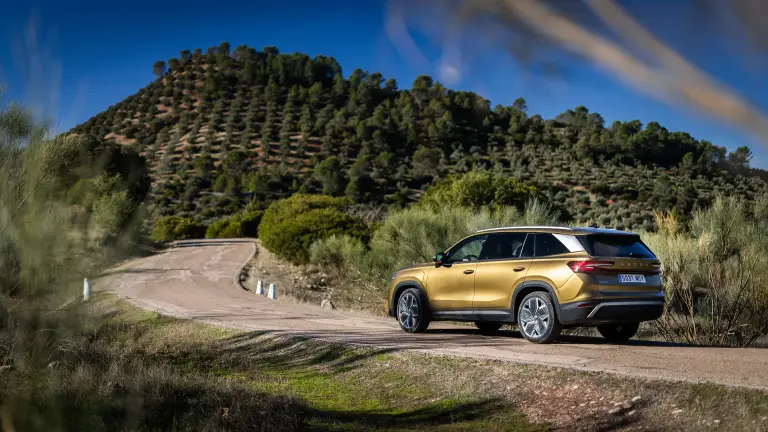More safety, more comfort, less engine load and fuel consumption in the start-up phase – auxiliary heating offers far more than just pleasant interior temperatures.
Modern auxiliary heating systems ensure an unobstructed view and warm feet. In addition, there will be less engine wear and lower fuel consumption and emissions as a result of a warmed-up engine in the start-up phase.
Operation is also very simple. The systems offered by ŠKODA can be controlled using a radio remote control (range up to 1,000 metres) or using the corresponding button on the air-conditioning control unit. Particularly convenient: the infotainment system allows you to programme when the auxiliary heating should automatically come on and be switched off. The driver simply has to enter when they would like to set off and what the temperature of their car’s interior should be at that time. The electronics do the rest.
The additional comfort created by the auxiliary heating is considerable. The windows do not have to be cleared of ice or the lock defrosted. That saves time and stops your hands from getting cold. The interior temperature will already be at the individual’s desired level of comfort when setting off. There is also a clear advantage regarding safety. Clear windows from the very beginning allow an unobstructed view of the road and traffic situation. Pleasant temperatures also increase the driver’s ability to concentrate from the outset.
Modern auxiliary heating systems not only warm the interior, but also the engine’s cooling circuit. The cold start-up phase, which is demanding on the engine, is no longer an issue. The result: less engine wear. After all, a cold start taxes the engine roughly as much as driving for approximately 70 kilometres on the motorway.
The warmed-up engine also has a positive effect on fuel consumption in the first few kilometres. The auxiliary heating’s fuel consumption in the warming-up phase is however limited. Depending on the model, the systems consume around 0.2 litres of fuel for a 30-minute heating phase. To a large extent, this is balanced out by the saving effect of the warm engine. Furthermore, there will be reduced exhaust emissions with an engine that is starting warm thanks to the auxiliary heating compared to a cold start.
Incidentally, auxiliary heating is not only beneficial in winter. Ventilation can be activated in hot summer days, consequently cooling down the interior.





